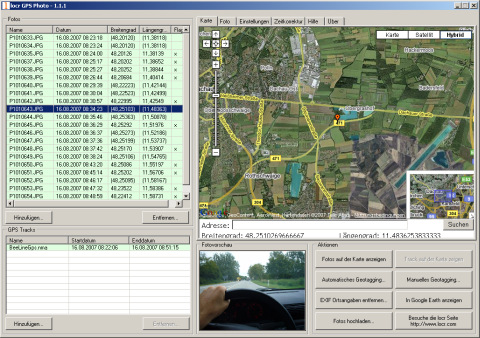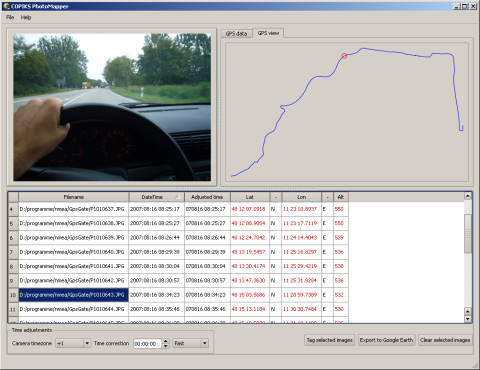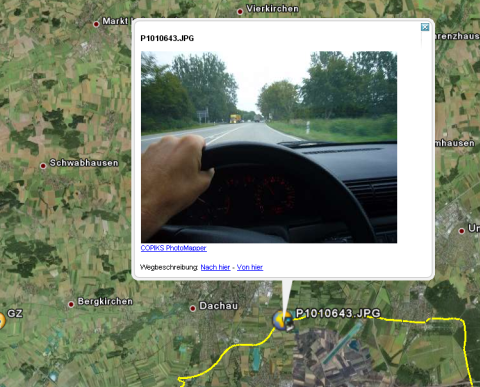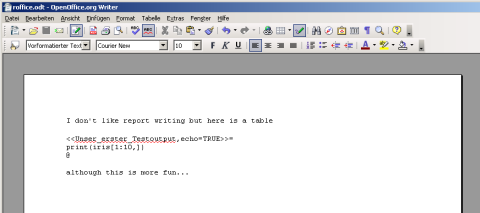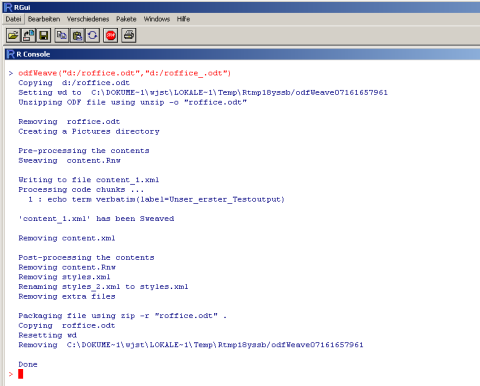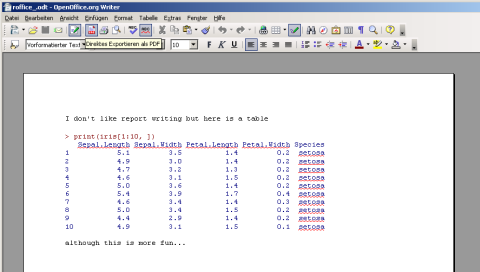This note should probably start with a smile ;-) as you may already know about my interest in parthogenesis, microchimerism, siRNA transmission and other epigenetic wonders. We already know about preferential transmission of allergy by the allergic mother Continue reading More on paranormal inheritance of allergy
Genetic databases – the tragedy continues
A new review paper about online genetic databases nicely summarizes the current state of the art (including my own efforts). There are only 13 databases Continue reading Genetic databases – the tragedy continues
Accidentally deleted files
Only a couple of years ago, you could edit your file allocation table and replace all these fancy question marks in ?ecret.doc to undelete your files.
While importing now my holiday pictures from a SD card to Picasa 2, I accidentally Continue reading Accidentally deleted files
Repetitio est mater studiorum
but repeats in the human genome are not such impressive. Instead they create a lot of trouble when situated in the close proximity to genes. Think of Huntingtons disease, myotonic dystrophy, fragile X or some ataxias. The human genome sequence paper already had a chapter Continue reading Repetitio est mater studiorum
Geotagging: Fast lane from JPG & NMEA to KMZ
Have you ever ever wondered how these nice photo tracks in Google Earth work?
After spending hours of try & error, here is my recommendation if you can record NMEA stream on your GPS device and JPG on your camera. No hacking, no conversion, no scripts, just a quick & intuitive way by freely available software.
Adjust your camera & GPS to be absolutely synchronous. After data recording copy all your files into a single directory and let Locr GPS Photo propose a GPS position for all photos. Correct positions in the map window if necessary.
Then fire up COPIKS Photo Mapper, load photos plus track and export all together as a KMZ file.
Living on borrowed time
An excellent new review summarizes our current knowledge about telomeres – the complicated chromosome end machinery that is necessary to prevent unwanted repair while allowing to track for the number of replications. Think of it like a source code control system as CVS, the Concurrent Version System. During a recent research project on life cycle of single point mutations / SNPs I realized Continue reading Living on borrowed time
Blink Plink
I had the chance to install now the new PLINK GWAS software for a further analysis of recently published ORMDL3 asthma data. It seems that PLINK is some software that I was looking for a long time (paper link|download link). There are great and foolproof functions to check the validity of your data. I discovered for example unnoticed stratification in the German case-control sample by first and second component of the MDS analysis Continue reading Blink Plink
Cha cha cha
SPIEGEL online points to a retrospective of former SCIENCE editor Daniel Koshland on the science typologies challenge, chance and charge.
Challenge – putting the pieces together like the discovery of the DNA structure of Watson & Crick.
Charge – solving longstanding ubiquitous problems like gravity laws by Newton, a rare event.
Chance – events like the development of PCR by Mullis.
I could add cha-uvinism (ignoring previous work), cha-os (also called creativity), cha-racter (???), cha-rity (work for nothing), cha-rade (also called congresses), cha-pter (many to write), cha-lk (many lectures), cha-nge (not really), cha-mpion (a few), cha-ir (less), cha-ff (most), cha-rts (hundreds), cha-t and cha-rivari (always), yea,yea.
Saturday night fever
New work in mice published in nature neuroscience now show that ordinary fever is caused by prostaglandin E2 stimulation of EP3 prostaglandin receptors in the median preoptic nucleus of mice. EP4 seem to mediate hypothermic response, leaves you to choose not only ambiyour desired body temperature
I had a dream tonight
I had a dream tonight. I do the final revision of a paper following many months of work and submit it to an internet server. Only 30 minutes later the first science journal agent contacts me offering immediate publication. More and more offers arrive and I finally decide to hand it over to nice publishing company that will pay so much money to continue my research.
I woke up and Continue reading I had a dream tonight
Catch you
Some of you may remember my recent post how to secure your laptop. There is now also an excellent way to secure your car, boat, or whatever you like. You even don’t need to be a gadget afficionado Continue reading Catch you
Calendar sharing – 2 way
In a previous post we have create calendar snippets in ics format. PHPicalendar is the ultimate solution to stitch these calendar snippets together to a workgroup view.
I am using the built-in RSS feed to be noticed about any forthcoming events that are not sitting in my own calendar.
There is only one drawback: phpicalendar doesn’t offer any possibility to import back any new meeting into Sunbird or Outlook. By using the following patch of events.php it may, however, send you back an .ics file (that can opens Sunbird automatically if configured correctly) by just clicking on any new event.
1: | |
If your calendar ics are really up to date, you may want to change $actual_calname in ical_parser.php to
$actual_calname = getCalendarName($filename) . ‘ (-‘ . round((time() – filemtime($filename) )/100000) . ‘ days old)’;
< I often only have time to read abstracts >
Sciencesque has an anonymous update of the impact factor and peer review discussion Continue reading < I often only have time to read abstracts >
An alternative to Pearson R^2
There is a nice online example of four datasets that show exactly the same variable mean AND Pearson R^2 although they look quite different!
I show here an alternative R solution for the correlation ratio eta that may help if you are dealing with such data.
1: | |
Sweave – seamless statistics and document automation
The R Munich user group likes Sweave. Here are 3 screenshots how to create a seamless R + Open Office integration (which works also for Word documents if you have installed the ODF converter plugin). First create your document
1: | |
the document
save it, open R and execute
Your document will then look like
